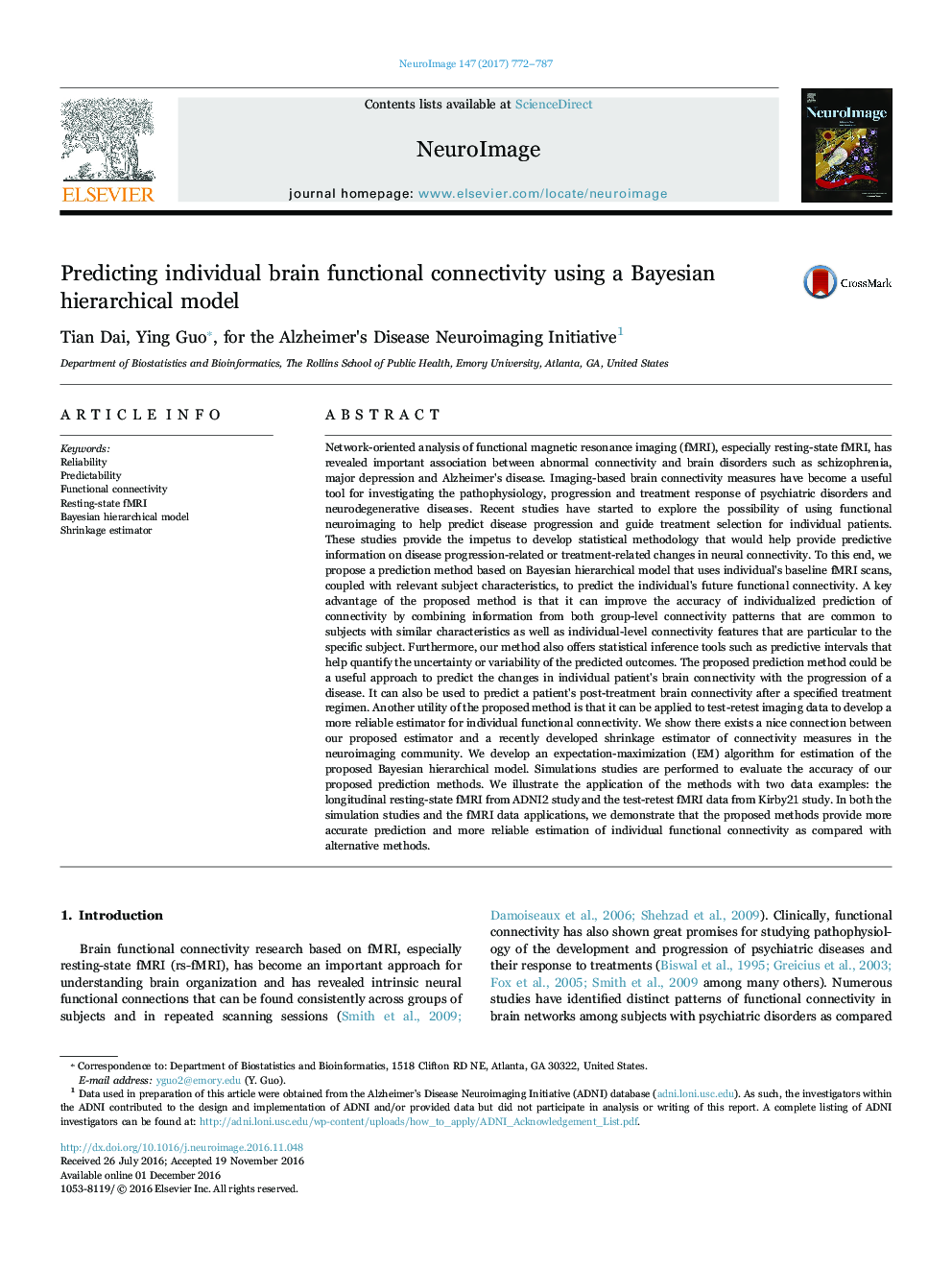| کد مقاله | کد نشریه | سال انتشار | مقاله انگلیسی | نسخه تمام متن |
|---|---|---|---|---|
| 5631543 | 1580863 | 2017 | 16 صفحه PDF | دانلود رایگان |
- A Bayesian hierarchical model for predicting individual future connectivity is proposed.
- The proposed model is general and can accommodate various study designs including longitudinal imaging studies and test-retest reliability studies.
- We use simulated data to show the BHM has improved prediction accuracy.
- We illustrate the application of the methods with ADNI2 study and Kirby21 study.
Network-oriented analysis of functional magnetic resonance imaging (fMRI), especially resting-state fMRI, has revealed important association between abnormal connectivity and brain disorders such as schizophrenia, major depression and Alzheimer's disease. Imaging-based brain connectivity measures have become a useful tool for investigating the pathophysiology, progression and treatment response of psychiatric disorders and neurodegenerative diseases. Recent studies have started to explore the possibility of using functional neuroimaging to help predict disease progression and guide treatment selection for individual patients. These studies provide the impetus to develop statistical methodology that would help provide predictive information on disease progression-related or treatment-related changes in neural connectivity. To this end, we propose a prediction method based on Bayesian hierarchical model that uses individual's baseline fMRI scans, coupled with relevant subject characteristics, to predict the individual's future functional connectivity. A key advantage of the proposed method is that it can improve the accuracy of individualized prediction of connectivity by combining information from both group-level connectivity patterns that are common to subjects with similar characteristics as well as individual-level connectivity features that are particular to the specific subject. Furthermore, our method also offers statistical inference tools such as predictive intervals that help quantify the uncertainty or variability of the predicted outcomes. The proposed prediction method could be a useful approach to predict the changes in individual patient's brain connectivity with the progression of a disease. It can also be used to predict a patient's post-treatment brain connectivity after a specified treatment regimen. Another utility of the proposed method is that it can be applied to test-retest imaging data to develop a more reliable estimator for individual functional connectivity. We show there exists a nice connection between our proposed estimator and a recently developed shrinkage estimator of connectivity measures in the neuroimaging community. We develop an expectation-maximization (EM) algorithm for estimation of the proposed Bayesian hierarchical model. Simulations studies are performed to evaluate the accuracy of our proposed prediction methods. We illustrate the application of the methods with two data examples: the longitudinal resting-state fMRI from ADNI2 study and the test-retest fMRI data from Kirby21 study. In both the simulation studies and the fMRI data applications, we demonstrate that the proposed methods provide more accurate prediction and more reliable estimation of individual functional connectivity as compared with alternative methods.
Journal: NeuroImage - Volume 147, 15 February 2017, Pages 772-787
